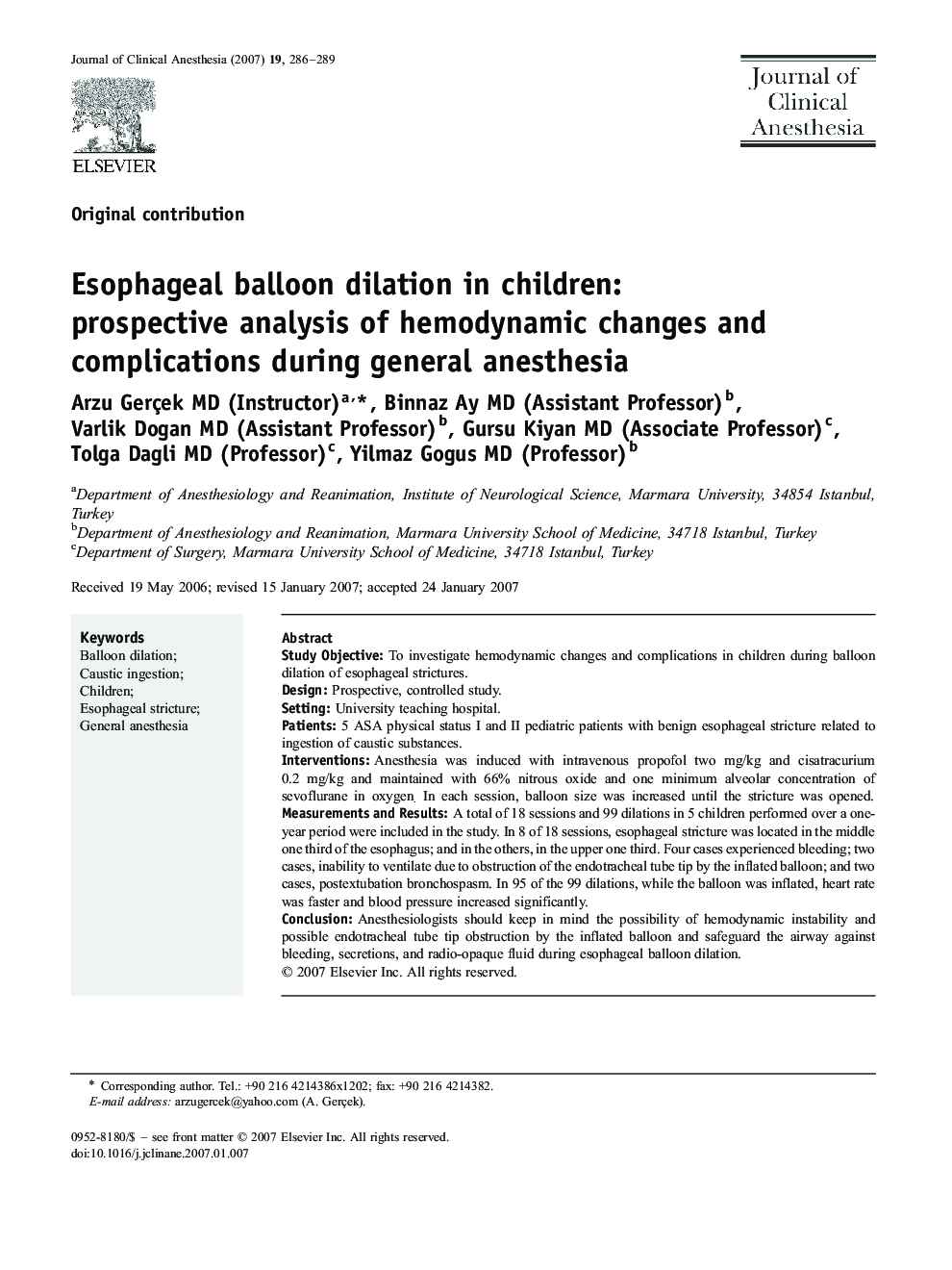| Article ID | Journal | Published Year | Pages | File Type |
|---|---|---|---|---|
| 2763977 | Journal of Clinical Anesthesia | 2007 | 4 Pages |
Study ObjectiveTo investigate hemodynamic changes and complications in children during balloon dilation of esophageal strictures.DesignProspective, controlled study.SettingUniversity teaching hospital.Patients5 ASA physical status I and II pediatric patients with benign esophageal stricture related to ingestion of caustic substances.InterventionsAnesthesia was induced with intravenous propofol two mg/kg and cisatracurium 0.2 mg/kg and maintained with 66% nitrous oxide and one minimum alveolar concentration of sevoflurane in oxygen. In each session, balloon size was increased until the stricture was opened.Measurements and ResultsA total of 18 sessions and 99 dilations in 5 children performed over a one-year period were included in the study. In 8 of 18 sessions, esophageal stricture was located in the middle one third of the esophagus; and in the others, in the upper one third. Four cases experienced bleeding; two cases, inability to ventilate due to obstruction of the endotracheal tube tip by the inflated balloon; and two cases, postextubation bronchospasm. In 95 of the 99 dilations, while the balloon was inflated, heart rate was faster and blood pressure increased significantly.ConclusionAnesthesiologists should keep in mind the possibility of hemodynamic instability and possible endotracheal tube tip obstruction by the inflated balloon and safeguard the airway against bleeding, secretions, and radio-opaque fluid during esophageal balloon dilation.
